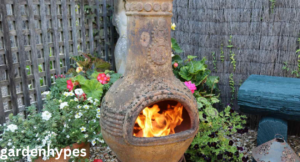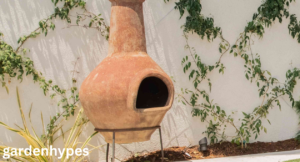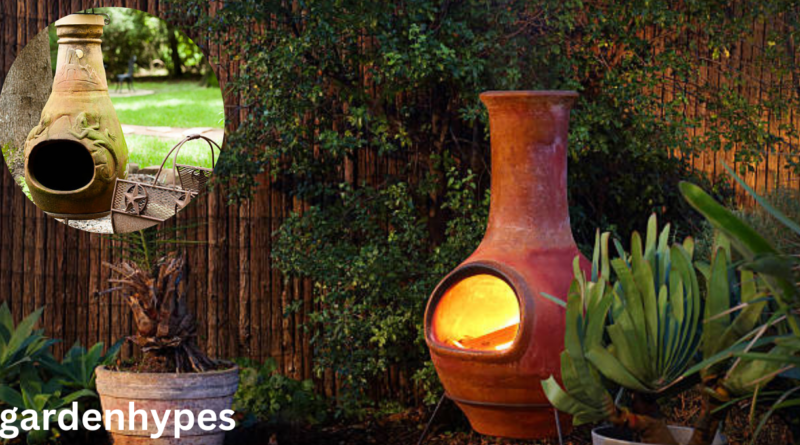Chiminea History Benefits and How to Use Them
Introduction
If you’ve ever sat around a cozy fire on a cool evening, you already know the magic of firelight. There’s something deeply comforting about gathering around warm flames, sharing stories, and letting the night stretch on just a little longer. A chiminea brings all of that warmth and charm into your backyard, patio, or garden in a way that feels rustic yet stylish.
So, what exactly is a chiminea? At its core, a chiminea is a freestanding, front-loading outdoor fireplace with a vertical chimney on top. Unlike traditional fire pits, which are open all around, a chiminea has a defined fire chamber where logs are placed, and smoke is directed upward through the chimney. This makes it safer, more efficient, and less smoky than a pit-style fire.
click in link Gnats in plants
Chimineas have exploded in popularity because they combine functionality with personality. They’re not just about heat; they’re about creating atmosphere. Imagine sipping wine while watching the flames dance inside a beautifully crafted clay or cast-iron chiminea. It instantly elevates your outdoor space into a place where people actually want to linger.
Modern homeowners love chimineas for several reasons:
- They’re compact, making them perfect for smaller patios.
- They’re easy to light and keep burning with minimal smoke.
- They double as décor, giving outdoor spaces a rustic, Mediterranean, or contemporary vibe depending on the material and style.
Whether you’re using it to warm up chilly evenings, roast marshmallows with the kids, or simply as a decorative statement piece, a chiminea is one of those outdoor investments that keeps paying off in comfort and ambiance.
The Fascinating History of Chimineas
The chiminea didn’t start as a trendy garden accessory. Its story begins hundreds of years ago in Mexico, where it was originally crafted as a practical household item. Traditionally made from clay, chimineas were used for both cooking and heating. Families would prepare tortillas, beans, and stews inside these compact fireplaces, while also using them to keep homes warm during cooler nights.
Their design was brilliant for the time. The rounded fire chamber protected the flames from wind and rain, while the chimney vent pushed smoke upward and away. This efficiency meant less wasted wood and a much cleaner burn compared to open fires. In fact, you could say the chiminea was one of the earliest examples of eco-friendly outdoor heating.
Over the years, the chiminea traveled beyond Mexico and into the southwestern United States, where it became popular for its rustic charm. By the late 20th century, it had spread worldwide, showing up in gardens across Europe, the UK, and beyond. Today, you’ll find chimineas not just in clay, but also in cast iron, steel, and even copper, reflecting how design tastes have evolved.
What’s fascinating is that while modern chimineas are often bought for style and ambiance, their practical roots remain intact. You can still cook on them, use them as heaters, or simply enjoy them as a decorative piece with historical depth. Owning a chiminea is like bringing a small piece of Mexican heritage into your backyard.
Why Choose a Chiminea Over a Fire Pit?
If you’re shopping for outdoor fire options, you’ll quickly notice that the big debate is always: chiminea vs. fire pit. At first glance, they both provide fire, warmth, and a focal point for gatherings. But once you dive deeper, the differences become clear—and those differences might make a chiminea the smarter choice.
First, let’s talk smoke control. Fire pits, being open all around, often billow smoke in every direction, which can be unpleasant if the wind shifts. A chiminea, on the other hand, channels smoke neatly upward through its chimney. That means you can sit close without coughing or getting a face full of smoke.
Next, consider safety. Because chimineas have an enclosed fire chamber, sparks and embers are less likely to escape compared to an open fire pit. This is especially important if you have kids or pets running around.
Then there’s efficiency. Chimineas burn wood hotter and cleaner. Their design allows for concentrated airflow, which helps fuel burn more completely. In practical terms, this means you use less wood to generate more heat compared to a pit.
And let’s not forget aesthetics. A chiminea is more than just a fire source; it’s an art piece. With their traditional shapes and handcrafted materials, chimineas give outdoor spaces character in a way that most fire pits can’t match.
click in link Gnats in plants

Of course, fire pits still have their place—they’re great for larger gatherings where people want to sit around in a circle. But if you’re looking for something stylish, efficient, and practical, a chiminea often comes out on top.
Types of Chimineas
One of the best things about chimineas today is the sheer variety available. No matter your style or budget, there’s a chiminea that fits your outdoor setup. Let’s break down the most common types:
Clay Chimineas
The most traditional type, clay chimineas are handmade and often feature rustic designs. They’re beloved for their authentic look and ability to retain heat for hours. However, clay can be fragile, especially if exposed to rain or sudden temperature changes. If you buy one, it’s wise to keep it covered when not in use.
Cast Iron Chimineas
If durability is your priority, cast iron is a fantastic choice. These chimineas are heavy, sturdy, and capable of withstanding years of use. They hold heat exceptionally well and are less prone to cracking than clay. The downside? They can rust if not cared for and are usually heavier to move around.
Steel Chimineas
Steel chimineas are lighter than cast iron and often come in more modern styles. They heat up quickly and are easier to transport, making them a good option for smaller patios or people who like to rearrange their space. The tradeoff is that they don’t retain heat quite as long as clay or cast iron.
Copper Chimineas
For those who want to make a statement, copper chimineas are stunning. They bring a contemporary, elegant look to outdoor spaces. Copper also resists rust, though it does develop a natural patina over time. The only catch? They tend to be the most expensive option.

In short, choosing the right chiminea comes down to what you value most—authenticity, durability, mobility, or luxury style.
click in link Gnats in plants
How to Use a Chiminea Safely
Owning a chiminea is exciting, but it comes with responsibility. After all, you’re dealing with real fire. Luckily, chimineas are naturally safer than open fire pits, but you’ll still want to follow some basic precautions.
- Placement Matters
Always place your chiminea on a flat, fireproof surface like stone, concrete, or brick. Never set it directly on wooden decks or grass, as sparks or heat could cause damage. Keep it at least a few feet away from walls, fences, or overhanging branches. - Fuel Wisely
Chimineas are designed to burn dry hardwood like oak, apple, or hickory. Avoid softwoods like pine, which produce excess smoke and sap. Never use charcoal or lighter fluid unless your chiminea is specifically built for it. - Starting the Fire
Begin with a small stack of kindling and slowly add logs as the fire builds. Overloading your chiminea with wood can cause it to overheat or even crack, especially if it’s made of clay. - Keep It Supervised
Like any fire source, a chiminea should never be left unattended. If you need to step away, let the fire die down first. Also, keep a bucket of water or sand nearby just in case. - Protect Your Family and Pets
While chimineas are safer than fire pits, they still get extremely hot to the touch. Place a fire screen in front of the opening if you have kids or pets, and always remind guests not to lean against it.
By following these steps, you can enjoy your chiminea with peace of mind, knowing you’ve taken the right precautions to keep everyone safe.
faqs
1. Can you cook food in a chiminea?
Yes! Traditionally, chimineas were used for cooking as much as for heating. You can cook simple meals like tortillas, roasted vegetables, or even meats over the flames. Many modern chimineas also come with grill attachments, making them perfect for outdoor cooking. Just remember to use dry hardwood for cleaner burns so your food doesn’t pick up an unpleasant smoky taste.
2. How long does a chiminea last?
That depends on the material. A clay chiminea, if well cared for, can last several years, but it’s more fragile and needs protection from rain and freezing temperatures. A cast iron or steel chiminea, on the other hand, can last 10+ years with proper maintenance. Copper models are also long-lasting and resist rust, though they develop a patina over time.
3. Do chimineas give off a lot of heat?
Absolutely. Chimineas are designed to burn efficiently and concentrate heat in one direction, usually out of the front opening. This means you get a strong, localized warmth perfect for seating areas. They don’t radiate heat in all directions like a fire pit, but they are surprisingly effective for keeping a group cozy on chilly nights.
4. Can you use a chiminea on a wooden deck?
It’s risky to place a chiminea directly on a wooden deck because of the heat and sparks. However, if you want to use one there, place it on a fireproof base, such as a thick stone slab, brick platform, or specialized fire mat. Also, make sure it’s kept at a safe distance from walls, furniture, and anything flammable.
5. How do you protect a clay chiminea from cracking?
Clay chimineas are charming but delicate. To keep yours from cracking:
- Always cure it before first use by starting with a very small fire.
- Never overload it with wood or create roaring flames.
- Avoid using it in freezing temperatures, as water inside the clay can expand and cause cracks.
- Keep it covered when not in use, ideally with a waterproof chiminea cover.
